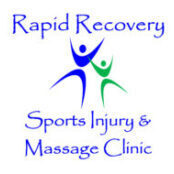Massage, Remedial Massage & Myotherapy for Foot Pain
Foot pain is extremely common. This is especially the case for people who spend extended periods on their feet or who are increasing their activity levels.
Most commonly the condition we see most with people presenting with foot pain is plantar fasciitis. The plantar fascia is a line of fascia that runs along the bottom of the foot from the heel towards the base of your toes. Plantar fasciitis is a condition that is typically inflammation and/ or generation of the plantar fascia.
Other conditions we see, but not as frequent include foot/ ankle sprains, peroneal tendinitis & tibias posterior tendonitis.
We commonly work with some of our fantastic local podiatrists when working with foot issues.
Your Massage, Remedial Massage & Myotherapy Treatment for Foot Pain
Well to start with we can’t treat, before we determine if this is the most likely cause of your pain. Your therapist will assess your foot pain, it’s symptoms and your history to determine the most likely cause.
With foot pain, many of the predisposing factors (the factors that made this more likely to happen) are the same.
So firstly, we work through the area of your injury using targeted remedial massage or myotherapy treatment to take pressure off the injury site, improve it’s function & optimise the healing environment.
Secondly, we perform a more general massage through the foot and lower leg. This improves both muscular and joint function in the area. When things are functioning correctly, less pressure is placed onto structures that it shouldn’t be. This helps again optimise the healing environment. As well, this will help to decrease the risk of future injury, both for the condition you have now and others.
Thirdly, in most cases your therapist will advise of some exercises. These will either be to help improve the flexibility & movement of muscle tissue and joints. Or to improve strength and stability in an area. The stronger a muscle is, the less chance of injury to that area.
Finally, your therapist will advise you of a plan. In fact we have a system for pain like this that we follow to advise you of the best time to follow up, it’s called the Rapid Recovery Pain Free Pathway. To put simply we would normally follow this up in a week, and then look to stretch that time out as your pain levels get under control.
Extra things your therapist can also do is help to identify which activity may have been the cause, advice on footwear and future activity to stay pain & injury free.
What is Plantar Fasciitis?
As we were saying earlier plantar fasciitis is the most common foot condition we see in clinic. Pain with this can vary from mild pain underneath your foot, commonly near the heal. To pain when you first get up from a period of inactivity (think bed or the couch) being a feeling like you are walking on razor blades. I should know, I’ve had this myself!
Plantar fasciitis is a condition that is typically inflammation and/ or generation of the plantar fascia. This usually occurs in people who have recently increased their activity levels, usually walking or running. Sometimes it is you’ve just been spending more time on your feet.
Common factors that put you at risk for plantar fasciitis include the activities we mentioned above, particularly if it on a harder surface. Also incorrect and poor supporting footwear, being overweight and most commonly tight calves.
We aren’t going to lie. Plantar fasciitis can be an issue that can take a while to get on top of. There’s no quick fix. This is why you need treatment from therapists who constantly treat and get fantastic results for plantar fasciitis. In fact, if plantar fasciitis isn’t treated it often will cause a heel spur.
How Do We Help?
Well firstly we do everything that’s in the treatment for foot pain. Too add to this we go about addressing the factors above:
- We talk to you about modifying activity to take load of the plantar fascia
- Identification of footwear imrpovements
- We can help you get more active, but in a safe way that limits force placed through the plantar fascia
- We use massage, remedial massage, myotherapy or/ and dry needling to release the calves and other tight muscles through the Lowe leg
In summary, Improving these factors as well as a treatment that optimises the healing environment and improves muscular & spit function is essential in treating plantar fasciitis. The earlier you seek treatment, the quicker we get you results!
